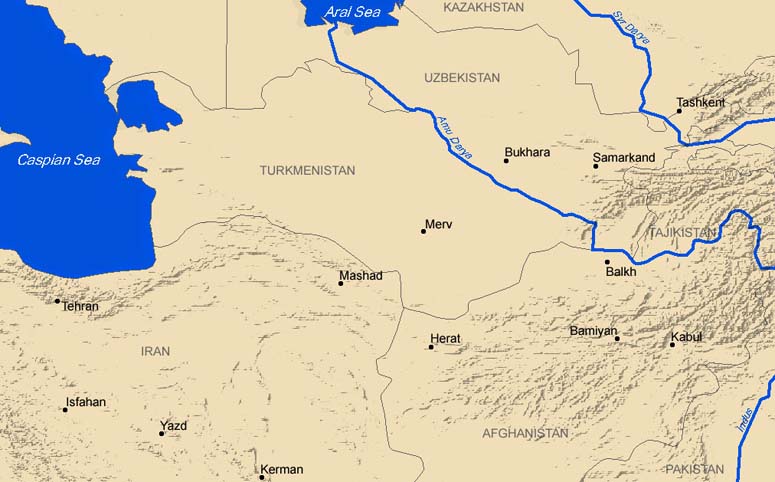 Balkh (/bɑːlx/; Persian/Pashto: بلخ Balkh; Bactrian: βαχλο, Pakhlo) was an ancient city and centre of Buddhism, Sufism and Zoroastrianism in what is now northern Afghanistan. Today it is a small town in the province of Balkh, about 20 kilometers northwest of the provincial capital, Mazar-e Sharif, and some 74 km (46 mi) south of the Amu Darya. It was one of the major cities of Khorasan, since the latter's earliest history. Marco Polo described Balkh as a "noble and great city".
Balkh (/bɑːlx/; Persian/Pashto: بلخ Balkh; Bactrian: βαχλο, Pakhlo) was an ancient city and centre of Buddhism, Sufism and Zoroastrianism in what is now northern Afghanistan. Today it is a small town in the province of Balkh, about 20 kilometers northwest of the provincial capital, Mazar-e Sharif, and some 74 km (46 mi) south of the Amu Darya. It was one of the major cities of Khorasan, since the latter's earliest history. Marco Polo described Balkh as a "noble and great city".The ancient city of Balkh was known to the Ancient Greeks as Bactra, giving its name to Bactria. It was mostly known as the centre and capital of Bactria or Tokharistan. Balkh is now for the most part a mass of ruins, situated some 12 km from the right bank of the seasonally flowing Balkh River, at an elevation of about 365 m (1,200 ft).
Outside the town was a large Buddhist monastery later known as Naubahar (or Nava Vihāra in Sanskrit).
French Buddhist Alexandra David-Néel associated Shambhala with Balkh, also offering the Persian Sham-i-Bala, "elevated candle" as an etymology of its name.In a similar vein, the Gurdjieffian J. G. Bennett published speculation that Shambalha was Shams-i-Balkh, a Bactrian sun temple









